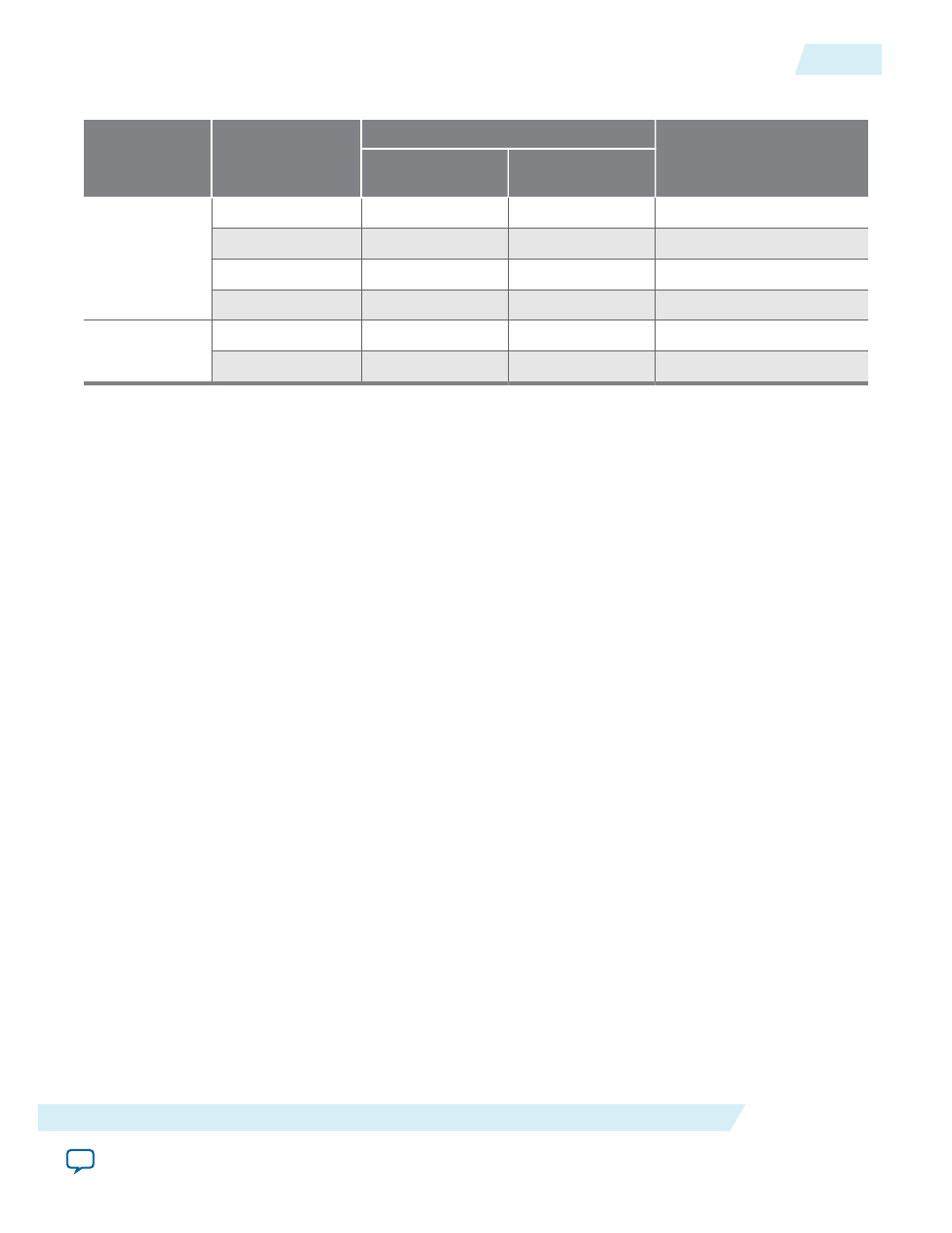Transmission overheads and lane rate calculations – Altera SerialLite III Streaming MegaCore Function User Manual
Page 39

Table 4-5: Latency Measurement for Duplex Core
Device
Clocking Mode
Parameters
Latency (ns)
Number of Lanes
Per-Lane Data Rate
(Mbps)
Arria 10
Standard
5
10,312.50
280
Advanced
5
10,312.50
213
Standard
5
17,400
202.21795
Advanced
5
17,400
181.978483
Stratix V,
Arria V GZ
Standard
5
10,312.50
362
Advanced
5
10,312.50
281
Note: To calculate the latency for 17,400 Mbps per lane data rate, an average value was taken from a set of
samples. For duplex advanced clocking mode, the latencies varied more in simulation.
Transmission Overheads and Lane Rate Calculations
The SerialLite III Streaming IP core lane data rate (transceiver data rate) is composed of the input data
rate and transmission overheads.
Lane Rate = Input Data Rate × Transmission Overheads
The parameter editor uses the above equation to ensure that the lane rate is within the maximum
supported transceiver lane rates. This puts an upper limit on the input data rate or the user clock
frequency, where the user clock frequency equates to:
User Clock Frequency = Input Data Rate/64
The SerialLite III Streaming IP core uses the Interlaken protocol for transferring data and therefore incurs
encoding and metaframe overheads. In the standard clocking mode, the IP core employs an fPLL for clock
generation. To ensure that the fPLL generates the clock as close as possible to the user clock specified by
you, the fPLL incurs additional overheads. The transmission overheads can thus be derived in the
following functions:
Transmission Overheads = Maximum (Interlaken Overheads, fPLL Overheads)
where,
Interlaken Overheads = 67/64 × (MetaFrame Length) / (MetaFrame length - 4)
To ensure the Interlaken interoperability as well as user clocking requirements, the fPLL overheads in the
standard clocking mode are chosen to be slightly higher than the Interlaken overheads.
The 40-bit PMA interface supports the lower range data rates up to 15.625 Gbps:
Lane Data Rate in Standard Clocking Mode = User Clock Frequency × 1.76 × 40 > Input Data Rate *
Interlaken Overheads
UG-01126
2015.05.04
Transmission Overheads and Lane Rate Calculations
4-15
SerialLite III Streaming IP Core Functional Description
Altera Corporation
